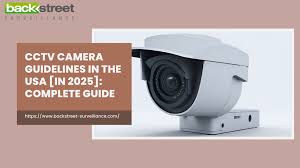CCTV, or Closed-Circuit Television, is a video surveillance system used to monitor and record activity in a given area. Unlike broadcast TV, the signals are not publicly distributed and are meant only for private observation. CCTV is widely used in homes, offices, and public spaces for security and monitoring.
Types of CCTV Cameras
There are several types of CCTV cameras, each designed for different needs:
- Dome Cameras: Ideal for indoor use, discreet and versatile.
- Bullet Cameras: Long-range and weatherproof, suitable for outdoor areas.
- PTZ Cameras (Pan-Tilt-Zoom): Offer full control, zooming, and tracking features.
- IP Cameras: High-resolution digital cameras that transmit over the internet.
Wired vs Wireless CCTV Cameras
- Wired Systems: Reliable and less prone to interference. However, installation requires cable routing.
- Wireless Systems: Easier to install and ideal for DIY setups, but can be affected by signal disruptions.
Pre-Installation Planning
Assessing Your Security Needs
Start by identifying the areas most vulnerable to intrusion—entrances, driveways, backyards, or hallways. Knowing what you need to monitor will guide your choice of equipment.
Choosing the Right Locations for Cameras
Strategic placement is crucial. Cameras should cover key entry points, blind spots, and high-traffic areas. Consider both indoor and outdoor environments.
Calculating Camera Coverage
Use field-of-view calculators or consult a professional to ensure each camera adequately covers its designated zone without overlap or gaps.
Equipment Required for CCTV Installation
Cameras
Select cameras based on resolution (1080p, 4K), field of view, and lighting conditions (IR night vision, low-light sensitivity).
Digital or Network Video Recorder
- DVR (Digital Video Recorder): Works with analog cameras.
- NVR (Network Video Recorder): Designed for IP cameras and offers better image quality and remote access.
Cables and Connectors
- Coaxial Cables: For analog setups.
- Ethernet Cables (Cat5/Cat6): For IP systems.
- BNC connectors, power adapters, splitters are also necessary.
Monitor or Display Screen
You’ll need a display (TV or computer monitor) for real-time viewing and system management.
Power Supply Units
Ensure stable power to all components. Consider Uninterruptible Power Supply (UPS) units for backup during outages.
Tools Needed for Installation
Drill and Mounting Kits
Essential for securing cameras and running cables through walls or ceilings.
Cable Tester
Used to verify that your cable connections are functional and secure.
Screwdrivers and Wrenches
Various hand tools are needed for mounting brackets and connecting components.
Ladder or Lift Equipment
For elevated placements, especially outdoors, ensure safety with proper height tools.
Software and Configuration Essentials
CCTV Software or Mobile App
Manufacturers often provide software or mobile apps for real-time monitoring, alerts, and playback.
Network Configuration
Configure IP addresses, subnet masks, and enable port forwarding for remote access. Always change default passwords for security.
Setting Up Remote Viewing
Use dynamic DNS or P2P cloud platforms for accessing your CCTV feed from anywhere in the world.
Installation Process Step-by-Step
Step 1: Mounting the Cameras
Use wall anchors and brackets to securely install cameras in chosen locations.
Step 2: Running and Connecting Cables
Route cables through walls, attics, or conduits. Avoid exposing cables to weather if outdoors.
Step 3: Connecting to DVR/NVR
Link cameras to the DVR/NVR using BNC or Ethernet cables, depending on the system.
Step 4: Powering the System
Connect cameras and recording units to the power source. Use surge protectors to safeguard against electrical damage.
Step 5: Testing the Setup
Check each camera feed on the monitor, adjust angles, and verify recording functionality.
Legal and Ethical Considerations
CCTV Laws in Australia
According to Australian law, you can install CCTV on your property, but you must not record beyond property boundaries or breach others’ privacy.
Privacy Compliance and Notices
It’s good practice to post visible signs informing visitors of active surveillance, especially in commercial settings.
Maintenance and Troubleshooting Tips
Regular System Checks
Review footage, check for camera outages, and inspect for damage weekly or monthly.
Cleaning Camera Lenses
Wipe lenses with microfiber cloths to prevent blurriness caused by dirt or weather buildup.
Firmware and Software Updates
Keep systems updated to patch vulnerabilities and enhance functionality.
Professional Installation vs DIY
Pros and Cons of DIY Installation
- Pros: Cost-saving, flexible scheduling.
- Cons: Potential errors, lack of professional-grade tools.
Benefits of Hiring Professionals
Experts can ensure optimal coverage, proper wiring, and legal compliance. For residents in Adelaide, Aussie Tech Solutions offers reliable, professional-grade CCTV installation services tailored to your property’s needs.
Costs Involved in CCTV Installation
Equipment Costs
Prices vary based on camera resolution, number of units, and storage options.
Installation Charges
Professional services may charge between $300 to $1000 depending on complexity.
Long-term Maintenance Costs
Plan for occasional servicing, part replacements, or software upgrades.
Where to Get Professional CCTV Services
Choosing a Reliable CCTV Provider
Look for certified professionals with transparent pricing, warranties, and local support.
Why Locals in Adelaide Trust Aussie Tech Solutions
Offering years of experience, cutting-edge technology, and fast response times, Aussie Tech Solutions is a top choice for residential and commercial security solutions in Adelaide.
FAQs About CCTV Camera Installation
Can I install a CCTV camera myself?
Yes, many kits are DIY-friendly, but professional setups ensure better reliability and legal compliance.
How many cameras do I need for my home?
Most homes need 4 to 8 cameras, depending on size and coverage needs.
Do CCTV cameras work without the internet?
Yes, local recording is possible. However, remote access and alerts require internet.
How long does installation take?
Basic systems can take 2–4 hours. Larger setups may take a day or more.
What’s the lifespan of a CCTV system?
With proper care, CCTV systems last 5–10 years.
Is cloud storage better than local storage?
Cloud storage offers remote backup and access but may have monthly fees. Local storage avoids recurring costs.
Conclusion
Installing a CCTV camera system involves thoughtful planning, quality equipment, and a reliable setup process. Whether you’re going the DIY route or hiring a professional, understanding what is required ensures effective security. If you’re in Adelaide and need expert help, trust Aussie Tech Solutions for dependable service and top-tier results.

